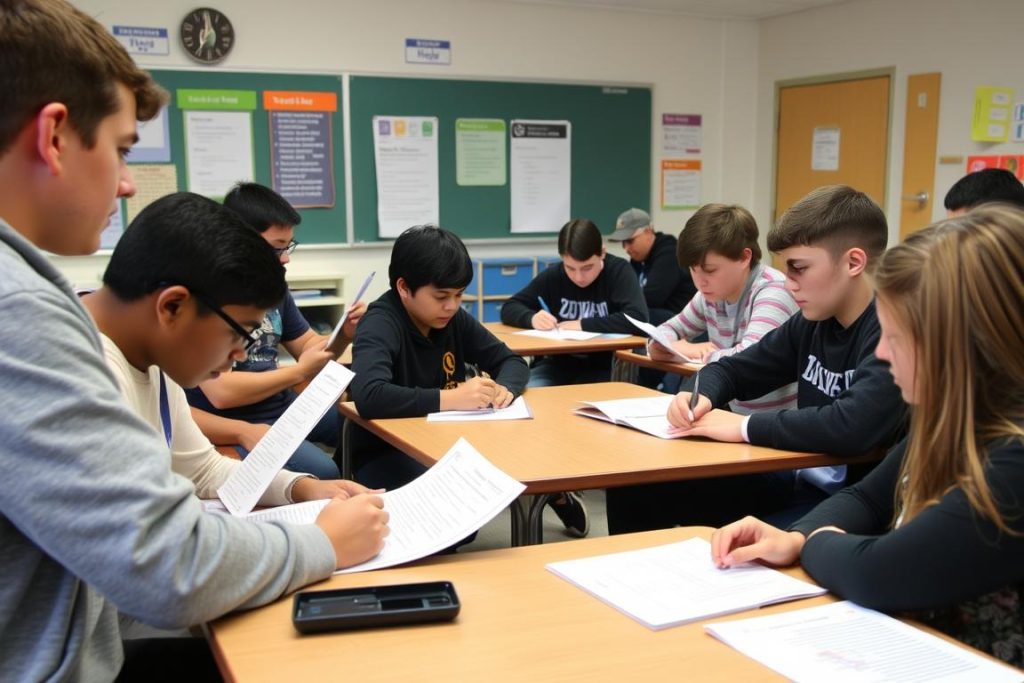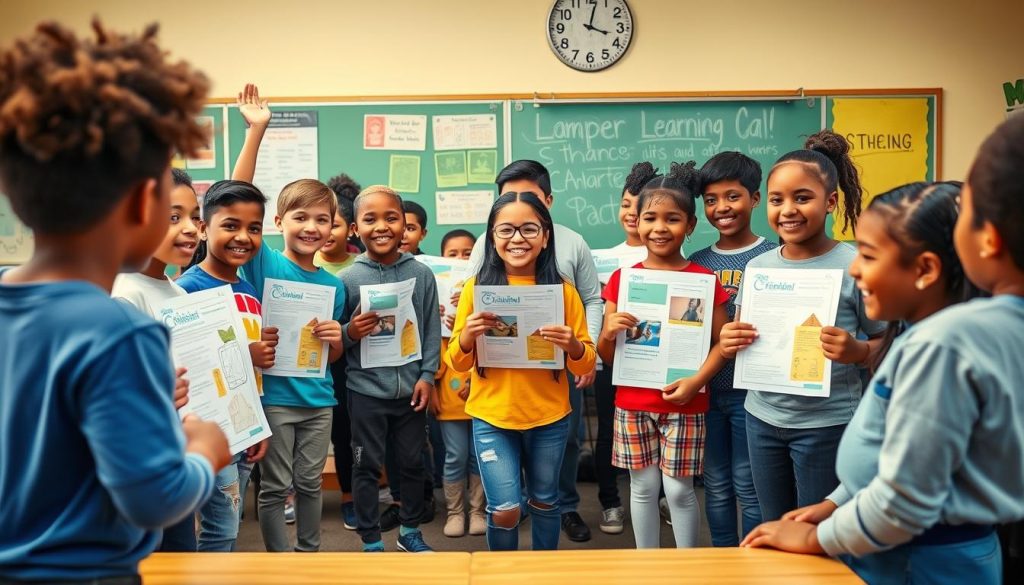Students exercising agency through collaborative project choices
Understanding Student Agency and Choice: The Foundation
At its core, student agency refers to a student’s capacity to take purposeful action in their learning process. When students have agency, they become active participants rather than passive recipients of knowledge. According to Self-Determination Theory developed by Deci and Ryan, humans have fundamental needs for autonomy, competence, and relatedness. When these needs are satisfied in educational settings, students experience enhanced intrinsic motivation and engagement.
Student choice is a critical component of agency, but it’s important to recognize that true agency goes beyond simply offering options. As educators, our teacher skills must include the ability to create learning environments where choices are meaningful, relevant to students’ interests, appropriately challenging, and offered in manageable quantities. Research by Schneider et al. (2018) shows that giving learners choice satisfies their psychological need for autonomy, leading to increased engagement and better information retention.
Developing the teacher skills to facilitate student agency requires understanding the difference between merely providing choices and fostering true autonomy. As Nicholas Alchin notes in his exploration of student agency, “making choices is not a sufficient condition for autonomy.” The goal is to help students develop the understanding and self-awareness to make choices that align with their values and genuine interests.
Discover resources to enhance your teacher skills for promoting student agency
The Benefits of Student Agency and Choice in the Classroom
For Students
- Increased engagement and motivation
- Development of critical thinking skills
- Greater ownership of learning
- Enhanced self-regulation abilities
- Improved academic outcomes
- Preparation for lifelong learning
For Teachers
- More responsive classroom environment
- Deeper student-teacher relationships
- Increased student engagement
- Opportunities for authentic assessment
- Professional growth in facilitation skills
- More enjoyable teaching experience
When students have agency in their learning, they develop essential skills for navigating an ever-changing world. Research shows that students who feel a strong sense of agency persist longer when facing challenges and are more likely to use available resources effectively. As educators, developing the teacher skills to support student agency means creating opportunities for students to make decisions about their learning experiences and take ownership of their educational journey.

Teacher demonstrating skills for facilitating Student Agency and Choice through small group discussion
Implementing Student Agency and Choice: Practical Strategies
Implementing Student Agency and Choice requires intentional planning and specific teacher skills. Here are practical strategies you can incorporate into your classroom:
1. Reflection and Goal-Setting
Create regular opportunities for students to reflect on their learning progress and set meaningful goals. This practice helps students develop metacognitive skills and take ownership of their learning journey. Consider implementing:
- Weekly reflection journals
- Student-led goal-setting conferences
- Learning portfolios that showcase growth over time
2. Flexible Learning Paths
Provide students with options for demonstrating their understanding of concepts or completing assignments. This approach honors different learning styles and interests while still ensuring mastery of essential content. Try incorporating:
- Learning menus or choice boards
- Project-based learning with student-selected topics
- Flexible assessment options
A well-designed choice board offering multiple pathways for demonstrating learning
3. Student Voice and Advocacy
Foster a classroom culture where student voice is valued and encouraged. Involve students in decision-making processes related to classroom rules, activities, and curriculum choices. Consider implementing:
- Class meetings for collaborative problem-solving
- Student-led discussions and presentations
- Feedback surveys to gather student input
Developing these teacher skills takes time and practice. For comprehensive guidance on implementing student choice in your classroom, explore our specialized course on providing student choice.
Enhance Your Teacher Skills with Professional Development
Ready to transform your classroom with student agency and choice? Our comprehensive course provides step-by-step guidance, ready-to-use templates, and expert strategies to help you implement effective student choice in your classroom.
Student Agency and Choice in Action: Classroom Examples
Seeing Student Agency and Choice in action can help clarify how these concepts translate to real classroom settings. Here are examples from different grade levels that demonstrate effective implementation:
Elementary Classroom Example
In Morgan Seely’s 4th-grade classroom in Kentucky, student agency evolved from simple reflection meetings to student-led initiatives. As described in her account, she began by asking students, “What should school feel like?” This simple question initiated a transformation in her classroom culture. Students gradually took ownership of their learning, moving from basic decisions like “staying on task” to more sophisticated choices like “using a second strategy to check my thinking.” By the end of the year, students were planning agency meetings without teacher prompting and even created a plan to ensure the next class of fourth graders would learn about agency too.

Elementary students exercising choice through differentiated learning stations
Middle School Example
In a middle school environmental science class, students were tasked with identifying a local environmental issue and developing a project to address it. Rather than prescribing the specific issue or solution, the teacher provided guidance while allowing students to make key decisions. One group chose to focus on reducing plastic waste in their community. They conducted research, interviewed local businesses, and ultimately developed a multi-faceted project that included fundraising for waste receptacles and organizing community clean-up days. This project not only addressed curriculum standards but also fostered authentic engagement with real-world problems.
High School Example
The “Terminators” robotics team from Dubai offers a compelling example of student agency in action. What began as a student-initiated afterschool club evolved into a national team competing at the World Educational Robot Contest. Despite limited teacher expertise in robotics, the students’ passion drove them to research competitions, divide responsibilities among team members, and develop the skills needed to succeed. Their journey demonstrates how providing space for student agency can lead to extraordinary achievements and the development of valuable skills like collaboration, problem-solving, and self-directed learning.
These examples illustrate how teacher skills in facilitating student agency can be applied across different grade levels and subject areas. The common thread is creating space for students to make meaningful decisions about their learning while providing appropriate support and guidance.
Find more classroom examples and resources at CreditsForTeachers.com
Overcoming Challenges in Implementing Student Agency and Choice
While the benefits of Student Agency and Choice are substantial, implementing this approach comes with challenges. Developing the teacher skills to navigate these challenges is essential for success:
Common Challenges
- Curriculum Constraints: Balancing student choice with required standards and curriculum
- Time Limitations: Finding time to develop and implement choice-based activities
- Classroom Management: Maintaining structure while allowing for autonomy
- Assessment Concerns: Evaluating diverse learning products fairly
- Student Readiness: Supporting students who struggle with independence
Practical Solutions
- Start Small: Begin with one subject area or one type of choice activity
- Create Clear Structures: Develop frameworks that provide guidance while allowing choice
- Use Rubrics: Create clear assessment criteria that can be applied to various products
- Scaffold Independence: Gradually release responsibility as students develop skills
- Collaborate with Colleagues: Share resources and strategies to save time
Remember that implementing student agency is a journey, not a destination. As Tanji Reed Marshall explains, “Building agency requires focused effort on the part of educators. It is more than a matter of giving kids choice boards and allowing them to weigh in on classroom procedures and rules. It requires as much work on the adult side as it does on the student side.” Developing the teacher skills to facilitate student agency means being willing to reflect on your own beliefs about power and control in the classroom.

Teacher and student collaboratively reviewing learning goals and choices
For comprehensive support in developing the teacher skills needed to implement student choice effectively, our specialized course offers practical strategies and ready-to-use resources.
Assessment and Feedback in Student Agency and Choice Environments
Effective assessment and feedback are crucial components of Student Agency and Choice environments. Traditional assessment methods often don’t align well with student-centered approaches, requiring teachers to develop new skills and strategies:
Rethinking Assessment
In classrooms that prioritize student agency, assessment becomes more than measuring content knowledge—it’s about evaluating the learning process itself. Consider these approaches:
- Formative Assessment: Ongoing feedback that guides learning rather than just evaluating it
- Self-Assessment: Students evaluating their own work against clear criteria
- Peer Assessment: Structured opportunities for students to provide feedback to each other
- Performance-Based Assessment: Authentic tasks that demonstrate application of knowledge
Effective Feedback Strategies
The teacher skills needed for providing effective feedback in student agency environments include:
- Focusing on the learning process rather than just the product
- Providing specific, actionable guidance rather than general praise
- Encouraging student reflection on feedback received
- Using questioning techniques that promote deeper thinking
- Creating opportunities for students to apply feedback in subsequent work

Students participating in structured peer assessment using clear criteria
When assessment and feedback become collaborative processes rather than top-down evaluations, students develop greater ownership of their learning and become more adept at self-regulation. These teacher skills are essential for creating environments where student agency can flourish.
Ready to Transform Your Teaching Practice?
Join thousands of educators who have enhanced their teacher skills through our professional development opportunities. Our courses are designed by teachers, for teachers, with practical strategies you can implement immediately.
Embracing the Journey of Student Agency and Choice
Implementing Student Agency and Choice in your classroom is a transformative journey that benefits both students and teachers. As educators, developing the teacher skills to facilitate student agency means creating environments where students can take ownership of their learning, make meaningful choices, and develop the self-regulation skills needed for lifelong success.
Remember that this journey is gradual and ongoing. Start with small steps, reflect on your practice, and be willing to adjust your approach based on student needs and responses. The rewards—increased engagement, deeper learning, and students who are prepared for the challenges of an ever-changing world—are well worth the effort.
By empowering students through agency and choice, we prepare them not just to succeed academically but to become active participants in shaping their own futures. The teacher skills you develop in this process will transform not only your students’ learning experiences but also your own professional practice and satisfaction.

Students celebrating the diverse outcomes of their agency-driven learning projects
Ready to take the next step in your journey with student agency and choice? Our comprehensive course on providing student choice offers practical strategies, ready-to-use templates, and expert guidance to help you implement effective student choice in your classroom.
Enhance Your Classroom with Student Agency Today
Transform your teaching practice with our comprehensive course on implementing student choice. Develop the essential teacher skills you need to create a classroom environment where students thrive through meaningful agency and choice.




